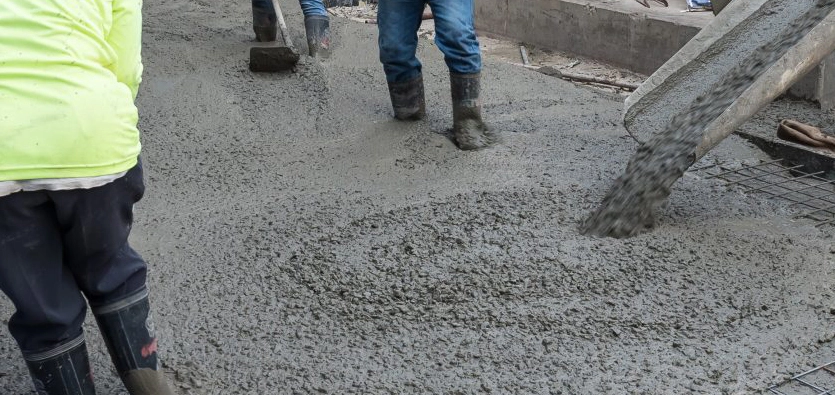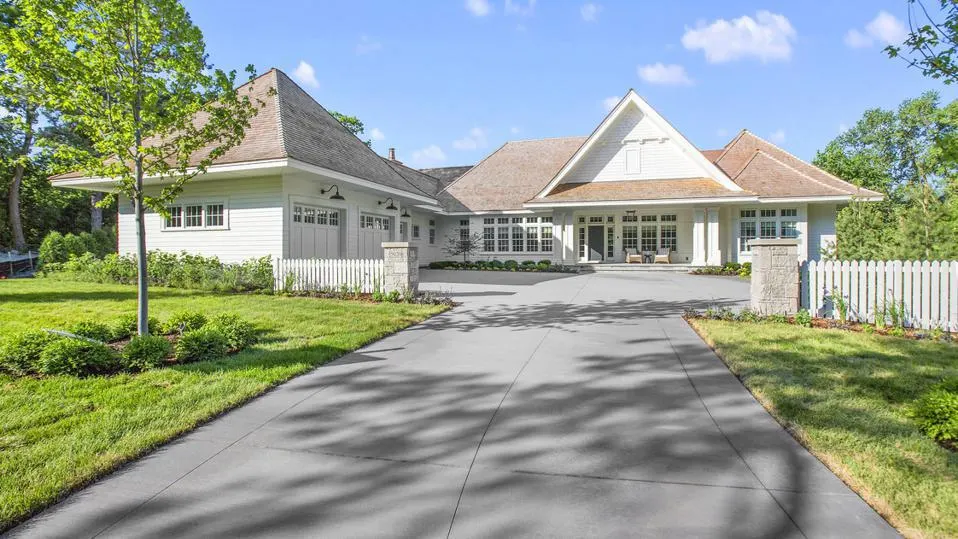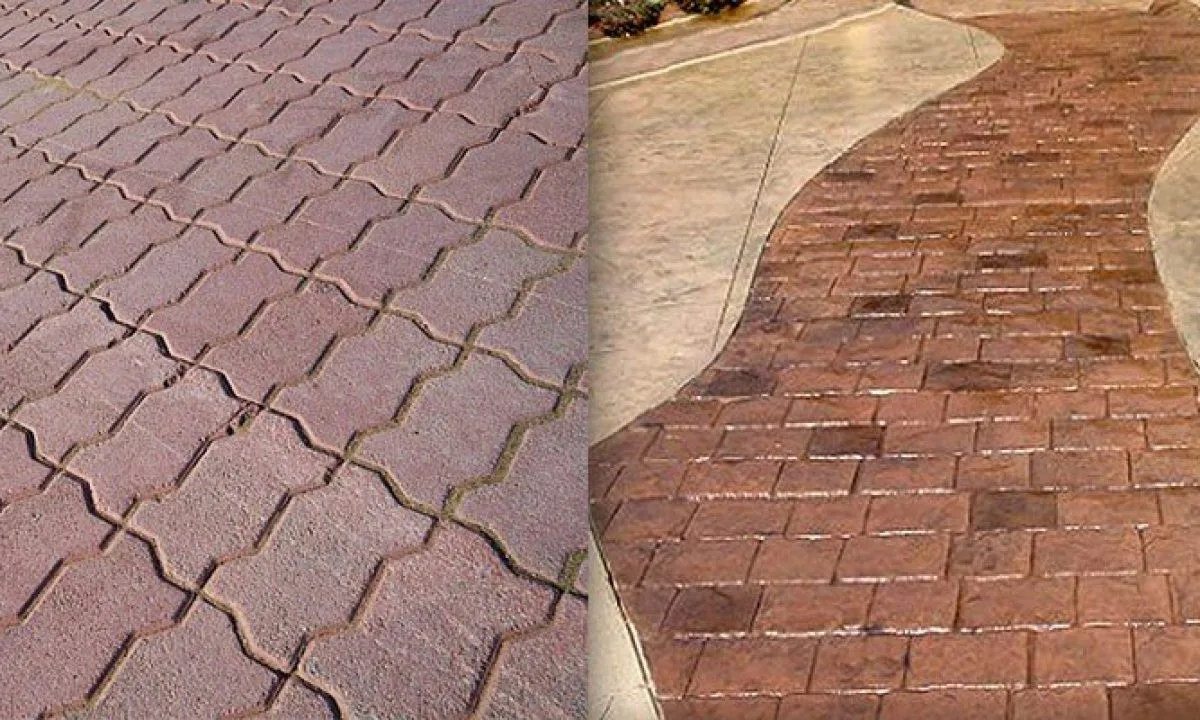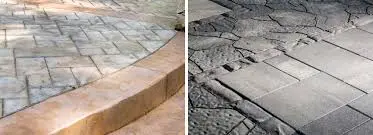Understanding Residential Concrete and its Importance
Concrete is a crucial component in residential construction, serving as the foundation for structures like homes, driveways, and sidewalks. Residential concrete is a mixture of cement, water, and aggregates like sand and gravel, forming a durable material used in various building applications.
Importance of Residential Concrete
Residential concrete plays a vital role in ensuring the stability and longevity of buildings. Because of its sturdy construction and ability to tolerate weather and temperature changes, it is perfect for carrying heavy loads and withstanding environmental variables.
Additionally, concrete offers fire resistance, contributing to the safety of residential structures.
Beyond its structural benefits, concrete is versatile in design, allowing customization to suit different architectural styles and preferences. It can be stamped, stained, or polished to enhance aesthetic appeal, adding value to residential properties. Moreover, concrete's low maintenance requirements make it a cost-effective choice for homeowners, reducing long-term upkeep expenses.
Concrete is a sustainable material because it can be recycled and used again for other construction projects. Its thermal mass properties contribute to energy efficiency by regulating indoor temperatures, thereby reducing homeowners' heating and cooling costs.
Residential concrete is the foundation of modern housing, offering durability, versatility, and sustainability. Its importance cannot be overstated in ensuring residential structures' safety, functionality, and aesthetic appeal. By understanding the definition and significance of residential concrete, homeowners can make informed decisions when building or renovating their properties.
Critical Properties of Residential Concrete
Residential concrete boasts essential properties that make it indispensable in construction projects. Understanding these properties is crucial for homeowners and builders alike.
Strength: One of the most notable features of residential concrete is its strength. Concrete structures can bear heavy loads, providing stability and support to residential buildings. The compressive strength of concrete can be tailored to specific requirements through proper mix design and curing techniques, ensuring the structure's longevity.
Durability: Durability is another crucial aspect of residential concrete. Concrete is resistant to weathering, corrosion, and degradation, making it ideal for withstanding harsh environmental conditions over time. This durability translates to reduced maintenance needs and prolonged lifespan for residential structures, saving homeowners time and money in the long run.
Workability: Workability describes how simple it is to mix, pour, and finish concrete during construction. Excellent workability in residential concrete makes pouring and shaping into appropriate shapes easy. This property enables builders to achieve intricate designs and architectural details, enhancing the aesthetic appeal of residential properties.

Cost-effectiveness: Despite its superior qualities, residential concrete remains a cost-effective building material. Its abundance and ease of production contribute to its affordability compared to alternative construction materials. Additionally, concrete's long-term durability and low maintenance requirements result in cost savings for homeowners throughout the lifespan of their properties.
Strength, durability, workability, and cost-effectiveness make residential concrete a preferred choice for construction projects. Whether it's building foundations, driveways, or sidewalks, concrete's versatility and reliability ensure the safety and longevity of residential structures.
Exploring Types of Residential Concrete
Residential construction relies on various types of concrete, each with distinct characteristics and applications. Understanding these types is essential for homeowners and builders alike.
1. Plain Concrete: Plain concrete, or non-reinforced concrete, consists of cement, water, and aggregates without reinforcement. It's commonly used for applications requiring minimal tensile strength, such as pavements, sidewalks, and small residential structures like fences and retaining walls. Plain concrete is straightforward to pour and finish, making it a cost-effective choice for simple construction projects.
2. Reinforced Concrete: Reinforced concrete is fortified with steel bars or mesh to enhance its tensile strength and durability. This type of concrete is widely used in residential construction for building foundations, floors, columns, and beams. By distributing weights more uniformly, the steel reinforcement lowers the chance of cracks and structural failures. Because of its adaptability and structural stability, reinforced concrete is a good choice for residential applications.
3. Prestressed Concrete: Prestressed concrete is engineered to withstand high-tension loads by applying compressive forces before it's subjected to external loads. This type of concrete is often used in residential construction for large spans, such as bridges, parking structures, and high-rise buildings. By pre-compressing the concrete, prestressed members can withstand greater loads and exhibit minimal deflection, resulting in more efficient and durable structures.
Plain, reinforced, and prestressed concrete are integral to residential construction and offer different strengths and applications. Every kind of concrete, whether for a straightforward walkway or a sophisticated high-rise, has a distinct function in guaranteeing the longevity and safety of residential buildings.
Plain Concrete in Residential Construction
These components combine to create a strong material used in various home settings.
In terms of composition, cement acts as the binder, holding the aggregate together. The aggregate provides strength and stability, while water activates the cement, allowing it to harden and form a solid structure. Depending on the project's specific requirements, additives like admixtures may be included to enhance particular properties such as workability, strength, or durability.
Plain concrete is characterized by its strength, durability, and affordability. It can withstand heavy loads and resist deterioration from weather and other environmental factors, making it suitable for many residential construction projects. Additionally, plain concrete can be easily molded into different shapes and sizes, providing flexibility in design.
Common Applications
Plain concrete is extensively used in residential construction. Due to its durability and load-bearing capacity, it is commonly employed in foundations, driveways, sidewalks, and patios. When building a foundation, plain concrete offers a sturdy base that can sustain the weight of the entire structure.
Plain concrete provides a flat surface for foot and vehicle traffic in driveways and walkways. Because of its lengthy lifespan and little care needs, it's an affordable option for homeowners. In patio construction, plain concrete can be stamped or stained to mimic more expensive materials like brick or stone, adding aesthetic appeal to outdoor living spaces.
Plain concrete is a foundational element in residential construction, providing strength, durability, and versatility for various applications.
Reinforced Concrete in Residential Construction: Reinforcement Materials
Reinforced concrete, a widely used construction material, combines the strength of concrete with the tensile properties of reinforcement materials such as steel bars or mesh. This combination enhances the structural integrity of concrete, making it suitable for various residential applications.
Steel bars, rebars, and mesh are the primary reinforcement materials used in residential construction. Rebars are typically placed within concrete forms in a grid pattern to provide strength and prevent cracking under tension. Steel mesh is often used as a secondary reinforcement to enhance concrete structures' durability and load-bearing capacity.
Advantages and Applications
Reinforced concrete offers several advantages for residential construction projects. Firstly, it provides increased strength and stability, allowing for the construction of taller buildings and structures with larger spans. Additionally, reinforced concrete is highly resistant to cracking and corrosion, resulting in longer-lasting and more durable constructions.
Building foundations and structural components, including slabs, beams, and columns, are among residential buildings' most popular uses of reinforced concrete.
Reinforced concrete foundations provide a solid base for the entire structure, ensuring stability and preventing settlement over time.
Moreover, reinforced concrete is also used in the construction of walls, floors, and driveways, where its strength and durability are essential for supporting the weight of the building and resisting various external forces such as wind and seismic activity. Reinforced concrete is a versatile and reliable material crucial in modern residential construction.
Prestressed Concrete in Residential Construction: Principle and Methodology
Prestressed concrete, an innovative construction material, employs a unique principle to enhance its strength and durability. Unlike traditional concrete, which relies solely on compressive strength, prestressed concrete introduces pre-applied compressive stresses to counteract potential tensile forces. This is achieved by embedding high-strength steel tendons within the concrete before it sets. Once the concrete hardens, the tendons are tensioned, and a compressive force is applied. This process enables the concrete to withstand greater loads and resist cracking, resulting in a more resilient and long-lasting construction material.
Benefits of Residential Projects
constructionPrestressed concrete offers several benefits for residential construction projects. First, it allows for the construction of lighter and more slender structures without compromising strength or stability. This gives architects and builders greater flexibility in designing residential buildings, enabling them to create more open and spacious living spaces.
Additionally, Prestressed concrete structures exhibit minimal deflection and deformation under load, resulting in improved comfort and safety for occupants. Furthermore, the enhanced durability of prestressed concrete means that residential buildings are less susceptible to damage from environmental factors such as earthquakes, hurricanes, and extreme weather conditions.
Moreover, prestressed concrete requires less maintenance over its lifespan than traditional concrete, resulting in lower long-term costs for homeowners. Overall, the use of prestressed concrete in residential construction offers a combination of strength, durability, and cost-effectiveness, making it an increasingly popular choice for modern housing projects.
Factors Influencing Concrete Selection
Several factors must be considered when choosing the right type of concrete for a construction project to ensure optimal performance and longevity.
Climate and Environmental Conditions
The temperature and environmental factors of the construction site heavily influence the type of concrete to be used. Concrete's performance and durability can be impacted by exposure to corrosive substances, high humidity, and extreme temperatures. For example, a durable and frost-resistant concrete mix is essential in areas with frequent freeze-thaw cycles to prevent cracking and deterioration over time. Similarly, in coastal regions where saltwater exposure is a concern, special additives may be required to enhance the concrete's resistance to corrosion.
Project Requirements
The particular requirements of the construction project also influence the choice of concrete. Aesthetic concerns, structural design, load-bearing capability, and other factors affect the choice of mixed design and reinforcement technique. For example, high-strength concrete may be required for tall buildings or heavy-duty industrial structures. In contrast, decorative concrete with color additives or surface finishes may be preferred for architectural elements or landscaping features.
Budget Considerations
Budget considerations are another critical factor in concrete selection. While high-performance concrete may offer superior strength and durability, it typically comes at a higher cost than standard concrete mixes. Therefore, balancing project requirements with budget constraints is essential to ensure cost-effectiveness without compromising quality or safety.
Through meticulously evaluating project specifications, financial constraints, and climatic and environmental factors, building experts can choose the best concrete blend for every project, guaranteeing peak efficiency and long-term durability.
Conclusion
Critical considerations in concrete selection include climate and environmental conditions, project requirements, and budget constraints. Proper mixing, pouring, curing, and finishing techniques are essential for achieving optimal results in concrete construction projects.
The future of residential concrete buildings appears bright, with advancements in sustainability, durability, and efficiency propelling the sector ahead as technology develops. By embracing these advancements and staying abreast of emerging trends, construction professionals can ensure the continued success and advancement of residential concrete construction in the years to coDon'ton’t delay; contact us anytime.




